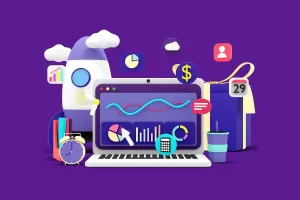Python programming has quickly become a top choice for aspiring software developers, and for good reason. Not only is it a high-level language that’s easy to learn, but it also has a wide range of applications in today’s tech industry. From web development to machine learning, Python can help you achieve your software goals and propel you towards success. In this blog post, we’ll explore how Python programming can be the path to your software success. Explore the world of Python programming and pave your way to software success through comprehensive courses at an esteemed IT Training Institute in Nashik.
First, we’ll dive into the basics of Python programming, including its syntax and structure. We’ll also discuss how it differs from other programming languages, and why it’s a great starting point for beginners. Next, we’ll explore the various applications of Python programming, from data analysis to web development and beyond. We’ll provide real-world examples of Python in action, and explain how you can use it to solve real-world problems. Throughout the post, we’ll also provide tips and resources to help you on your Python programming journey.

Python: A versatile programming language.
Python is a versatile programming language that has become increasingly popular in recent years. It is a high-level language that is easy to learn, making it an attractive option for both beginners and experienced programmers. Python’s versatility lies in its ability to handle a wide variety of tasks, from web development to scientific computing and data analysis. One of the key features of Python is its extensive library of pre-written code, which can save developers a lot of time when building applications. Additionally, Python’s syntax is clean and easy to read, making it a great language for collaborative projects. Whether you are just starting out in programming or looking to expand your skill set, learning Python is an excellent choice that can provide a path to software success.
Advantages of using Python.
Python has become one of the most popular programming languages in the world, and for good reason. It is versatile, efficient, and relatively easy to learn. In this document, we will discuss the advantages of using Python for software development. The first advantage is its simplicity and readability. Python has a clean and straightforward syntax that is easy to understand, making it an ideal language for beginners. It also has a large standard library that offers a wide range of functions and modules, reducing the need for developers to write code from scratch. Additionally, Python has a strong community that constantly contributes to its development, ensuring that it remains a cutting-edge language for software development. With these advantages, it is no wonder that Python has become the language of choice for many software developers in various industries.
Python libraries for data science.
Python libraries for data science are essential tools for any aspiring data scientist or analyst. Python’s robust and versatile libraries make it a popular choice for data science applications, and there are a plethora of libraries available that can help you perform complex data analysis tasks with ease. Three of the most commonly used libraries for data science are NumPy, Pandas, and Matplotlib. NumPy provides a powerful set of tools for working with arrays and matrices, while Pandas offers a high-level data manipulation interface that is ideal for working with structured data. Matplotlib can be used to generate high-quality visualizations of the data, making it easier to understand and analyze. By mastering these three libraries, you will be well on your way to becoming a proficient data scientist and will be able to tackle a wide range of data science projects with confidence.
Python frameworks for web development.
Python has become a popular programming language for web development, thanks to its simplicity, flexibility, and scalability. One of the reasons why Python is so versatile is the availability of numerous frameworks that provide developers with pre-built modules, tools, and libraries for web development. In this document, we will discuss four of the most popular Python frameworks for web development – Flask, Django, Pyramid, and CherryPy. These frameworks enable developers to build web applications quickly, efficiently, and securely. They offer a range of features including support for various databases, RESTful APIs, authentication, and templating engines, making them suitable for a wide range of web development projects. By understanding the unique features and capabilities of these frameworks, developers can choose the one that best fits their project requirements, and build robust and scalable web applications with ease.
Python: Your path to success.
Python Programming: Your Path to Software Success is a comprehensive guide to mastering the Python programming language. Whether you are a beginner just starting out or an experienced programmer looking to expand your skill set, this document will provide you with the knowledge and tools you need to succeed in the software industry. Python is a high-level, general-purpose programming language that is widely used in a variety of fields, including data science, machine learning, web development, and more. Its simplicity and ease of use make it a popular choice for developers of all skill levels. In this guide, we will cover the basics of Python programming, including data types, control structures, functions, and modules. We will also delve into more advanced topics, such as object-oriented programming, file handling, and web development with Flask. By the end of this document, you will have a solid foundation in Python programming and be ready to tackle real-world software development projects.
Conclusion
Python programming is an essential skill for aspiring software developers. With its simple syntax and broad range of applications, Python is an ideal language for both beginners and experienced programmers. Whether you’re looking to build a career in software development or just want to add a valuable skill to your resume, learning Python can open doors to new opportunities and successes. By taking the time to learn and master Python, you can position yourself for success in the ever-evolving world of software development.
















